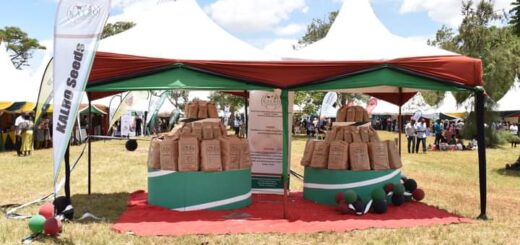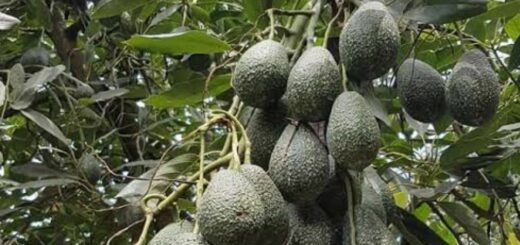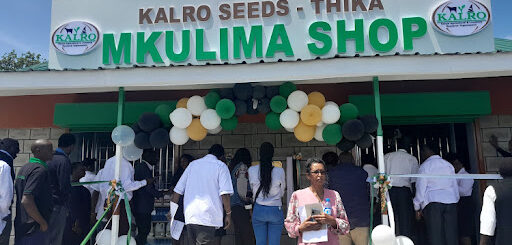Maximizing Dairy Production Through Effective Maize Silage Making
In the realm of dairy farming, ensuring a consistent and nutritious feed source is paramount for optimal milk production. Silage, particularly maize silage, emerges as a crucial component in this equation. The significance of silage in dairy production is multifaceted, ranging from mitigating the impact of drought to significantly boosting milk yields.
Importance of Silage in Dairy Production
Dairy farming, often vulnerable to the uncertainties of weather patterns, faces challenges during periods of drought. Maize silage acts as a reliable reservoir of nutrition, allowing farmers to maintain a steady supply of quality feed even when traditional forage sources are scarce. This resilience enhances the overall well-being of dairy cattle, ensuring they receive essential nutrients to sustain milk production.
Composition of Maize Stalk
To understand the benefits of maize silage, it is crucial to delve into the composition of maize stalks. Maize stalks are rich in carbohydrates, fiber, and energy, making them an excellent choice for silage production. The abundance of these nutrients contributes to the enhanced nutritional value of maize silage, promoting robust health in dairy cattle.
Benefits of Maize Silage
The benefits of maize silage extend beyond mere drought resistance. It serves as a concentrated and palatable source of nutrition, leading to increased milk production in dairy cows. The controlled fermentation process in silage enhances nutrient digestibility, providing a balanced diet for cattle.
Meticulous Process for Maximum Benefits
However, the benefits of maize silage can only be fully realized through a meticulous silage-making process. Careful attention must be given to the various types of silage storage methods, each with its own set of advantages and drawbacks.
Types of Silage Storage
Pit Storage
Benefits: Pit storage is a cost-effective option that suits small to medium-sized farms. It allows for bulk storage and is adaptable to various climates.
Drawbacks: Challenges may arise in managing aerobic spoilage, and proper compaction is essential to prevent air pockets.
Silage Bags
Benefits: Silage bags are flexible, enabling easy adaptation to varying quantities. They offer excellent anaerobic conditions for fermentation, reducing spoilage risks.
Drawbacks: Initial setup costs can be relatively high, and bags are susceptible to damage from wildlife or machinery.
Bunker Silos
Benefits: Bunker silos are suitable for large-scale farms, providing efficient compaction and excellent protection against spoilage.
Drawbacks: The initial investment and space requirements may be limiting factors for some farmers.
Silage-Making Process
The silage-making process involves several critical steps, starting with the collection of maize stalks. To enhance fermentation, additives such as molasses can be incorporated. Molasses not only aids in the fermentation process but also adds palatability to the silage.
Ingredients and Materials Needed
- Maize Stalks
- Molasses
- Silage Inoculant (optional)
- Equipment: Chopper, Baler, Silage Bags or Pit
Silage-Making Steps
Harvesting and Chopping
Harvest maize at the right stage to ensure optimum nutrient content.
Chop the maize stalks into small, uniform pieces for effective compaction.
Addition of Molasses
Incorporate molasses during the chopping process to enhance fermentation and improve taste.
Compaction and Sealing
Pack the chopped maize tightly into the chosen storage structure.
Ensure proper compaction to expel air and create anaerobic conditions for fermentation.
Cover and Seal
In-pit storage, cover the silage with a plastic sheet and seal it with soil.
In silage bags, expel air and seal tightly to prevent spoilage.
Fermentation Period
Allow the silage to undergo fermentation for a specified period, typically a few weeks.
Feed Testing and Precautions
Before feeding, test the silage for quality, including moisture content and nutrient composition.
Introduce silage gradually into the diet to acclimate animals and monitor for any signs of health issues.
Importance of Harvesting Maize Silage at the Right Stage: A Precaution Against Drought
Harvesting maize for silage at the optimal stage is a crucial aspect of ensuring the success of silage production, particularly as a preemptive measure against the challenges posed by drought. The timing of maize harvest significantly influences the nutritional content and overall quality of the silage, making it a strategic practice for dairy farmers facing unpredictable weather patterns.
1. Nutrient Content Preservation
Harvesting maize at the right stage ensures the preservation of essential nutrients. During the early stages of growth, maize plants are at their peak nutritional value, with higher levels of carbohydrates and proteins. Harvesting at this stage captures these nutrients, providing a nutrient-dense feed source in the form of silage.
2. Moisture Content Management
Optimal harvesting timing also addresses concerns related to moisture content. Maize harvested too late may have lower moisture levels, impeding the natural fermentation process crucial for silage preservation. Conversely, harvesting too early may result in excess moisture, leading to undesirable fermentation and nutrient loss. The right stage strikes a balance, promoting favorable moisture levels for effective fermentation.
3. Drought Mitigation
Harvesting at the right stage serves as a preemptive measure against the impact of drought. In regions prone to water scarcity, timely harvesting ensures that maize plants have absorbed sufficient moisture during their growth stages. This becomes especially critical during dry spells when water availability is limited. The harvested maize, with optimal moisture content, becomes a reliable source of nutrition during periods of forage scarcity.
4. Preservation of Forage Quality
Timely harvest contributes to the preservation of forage quality. Maize plants undergo changes in fiber content and digestibility as they mature. Harvesting at the right stage captures the forage at its peak quality, offering a balanced nutritional profile for dairy cattle. This not only supports milk production but also enhances the overall health and well-being of the animals.
5. Increased Fermentation Efficiency
The fermentation process, a critical aspect of silage making, is more efficient when maize is harvested at the right stage. Optimal nutrient levels and moisture content promote the growth of beneficial microorganisms that facilitate the preservation of the forage. This efficiency minimizes the risk of spoilage and nutrient loss during storage.
6. Sustainable Feed Supply
Harvesting at the right stage aligns with the principles of sustainable farming. By maximizing the nutritional content of maize silage, farmers can reduce reliance on external sources of feed, particularly during drought conditions. This contributes to the sustainability of dairy farming operations, ensuring a consistent and self-sufficient feed supply.
Effective maize silage making is a cornerstone of successful dairy farming, offering a reliable solution to feed challenges. By understanding the importance of silage, exploring storage options, and implementing a meticulous silage-making process, farmers can optimize milk production, ensuring the well-being of their dairy cattle and the sustainability of their operations. The importance of harvesting maize for silage at the right stage goes beyond immediate nutritional benefits. It serves as a precautionary measure against drought, enabling dairy farmers to proactively manage forage scarcity, preserve nutrient quality, and sustain their operations even in challenging climatic conditions. As a pivotal component of silage-making, this practice empowers farmers to fortify their resilience against the uncertainties of weather patterns, ultimately enhancing the productivity and longevity of their dairy enterprises.
At AFRICAN BUSINESS HUB, we specialize in providing top-quality silage maize to meet the nutritional needs of livestock. You’ve come to the right place if you are searching for premium maize silage for your animals. In addition to offering high-quality silage, we continuously seek opportunities to expand our agricultural operations. We are actively looking for suitable land to lease to enhance our cultivation capabilities. If you have land available or are interested in our silage products, please contact us. Let’s explore mutually beneficial collaborations and cultivate success together! Contact us using the contact form below, and we’ll connect with you soon.
If you have any questions, contributions or concerns please contact us at +254718270973/// or whatsapp
Email: info@africanbusinesshub.com/ Support@africanbusinesshub.com



